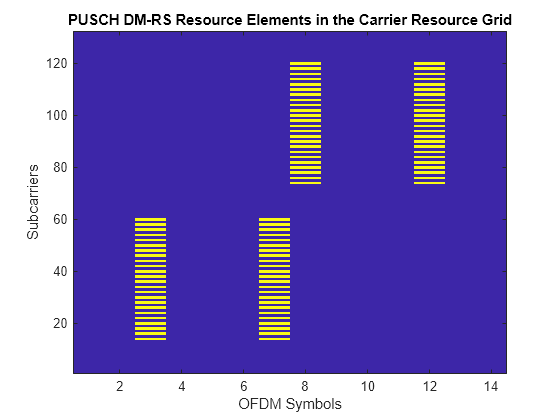nrPUSCHDMRSIndices
Generate PUSCH DM-RS indices
Description
ind = nrPUSCHDMRSIndices(carrier,pusch)carrier
specifies the carrier configuration parameters for a specific OFDM numerology.
pusch specifies the PUSCH configuration parameters. The returned
indices are 1-based using linear indexing form.
ind = nrPUSCHDMRSIndices(carrier,pusch,Name,Value)
Examples
Input Arguments
Name-Value Arguments
Output Arguments
References
[1] 3GPP TS 38.211. “NR; Physical channels and modulation.” 3rd Generation Partnership Project; Technical Specification Group Radio Access Network.
